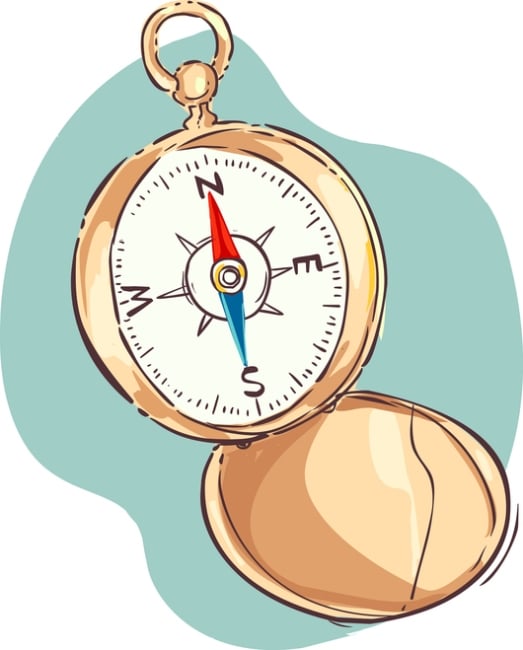You have /5 articles left.
Sign up for a free account or log in.

iStock/corbac40
Last month, I concluded a column by suggesting that department leaders could help faculty and staff members prepare themselves for change by seeking and sharing stories of the department’s past accomplishments. Some of the HERS Institute alumnae who contacted me were skeptical. They were worried that “storytelling” in their departments would inevitably turn to “war stories” with the predictable commentary “We tried that once and it didn’t work!”
But with clarity about your goals and some pointers on process, this sort of review conversation can yield positive results for many groups facing the need for change.
Why Look at Past Accomplishments?
The review approach I propose helps most when the issues are presenting themselves as lack of movement rather an active opposition -- in other words, when you are stuck. Leaders recognize that their colleagues have identified challenges and acknowledged changes are needed, but they show no energy for acting. What can get the group unstuck so you can together determine what to do next and how to do it?
I am convinced most people unconsciously stall about changes until they have some confidence that they and their colleagues can achieve what is needed. Gaining that sort of confidence is difficult when what is needed may be evolving or is being posed as an “innovative” (read: experimental) undertaking.
What you can gain from reviewing past accomplishments is a reminder of past success. This history shows that members of the group have achieved goals together. It indicates what was needed at the time and affirms capacity already in place.
This process is not committing to a review of “how we’ve always done things” -- not if you keep the analysis focused on specific accomplishments: the high points that have shaped the department. Inevitably, that means analyzing how the department has changed over the years. By definition an accomplishment is a set of significant activities that involved a change from what was being done (including having done nothing before). Embracing that history means honoring the achievements and retaining a spirit of appreciation. It also means you take the accomplishments seriously enough to analyze what was involved and what you can learn as you plan your next accomplishments.
Reviewing Accomplishments as a Departmental Compass
What are you looking for? The three things needed most by a group that’s stuck are shared energy, skills for transitions and analogies for analysis. How will you find them in the past? The process I suggest starts with ideas outlined in “Dissecting Accomplishments as a Career Compass,” a 2006 article published in Academic Physician and Scientist by Judith Kapustin Katz and Page S. Morahan. Katz and Morahan are experts in career development for women in STEM fields. The article documents their work with the women in the Executive Leadership in Academic Medicine program. They found that close analysis of past accomplishments allowed the participants to find what combination of skills, aptitudes and preferences were at play in achieving important results for them and others. Using this information provided a compass for mapping the next steps on their career paths. A variation of their approach can move a department forward as well.
In many years of using this approach with individual women at the HERS Institute, we found that the exercise was much more powerful when carried out in a group. It turns out to be hard for individuals to see clearly the strengths and skills needed for their accomplishments. Working with others, each person received useful questions and suggestions about what they saw as vital to achieving success in the situations described.
What I propose takes advantage of the framework outlined by Katz and Morahan for career planning, while adapting the exercise to suit the specific circumstances of your department. The goal is to draw out and draw on the department’s accomplishments to move the group forward with comfort and confidence.
Framing the Exercise: Clarity About Your Goals
I encourage you to involve initially a few other members of your department in planning this activity. They can read Katz and Morahan’s original article to have a better sense of how I am adapting the exercise; you may want to make other adjustments. You will need to decide how much time the group can spend together, how much you will ask department members to do ahead of a first group activity and what are the best follow-up measures for your group. During the discussions, their primary role will be to keep everyone focused on past accomplishments -- not wandering into war-stories territory -- and to remind everyone of the current challenges you have agreed you need to face.
Your planning group can also help you decide how to introduce this concept to the department. A straightforward approach seems like the best option to me: “We seem stuck. We have identified challenges and possible actions, but we have not yet created a plan for acting. We have made changes in the past to respond to needs and opportunities. I want us to review some past accomplishments in order to draw on those skills and tap into that energy to get us moving forward.”
Identifying Accomplishments
Having clarified your goals and framed the conversation, you are ready to start. Before you meet as a group, ask each member of your department to directly contribute at least one example of an accomplishment the department has achieved during the past decade. I suggest a total of 12, so if your department is small, ask each person for more than one example. Having many examples will increase the likelihood that you will identify several accomplishments that spark shared interest and remind you of the skills you have developed in past projects.
The length of time most members have been in the department may require adjusting the time frame to cover the period of time most have been together. Or if a significant number of individuals in your department are new, you might suggest they collect examples from key constituents or recent retirees.
Note that I said that you should collect these examples ahead of your first meeting. Having each person name at least one accomplishment before the conversation starts means people will not be editing their responses based on what others have said. Finding the same accomplishment listed several times is important information. As long as everyone has made a contribution to the list, you have useful material to analyze.
Creating Accomplishment Statements
Working together, the group needs to create accomplishment statements for the examples. Katz gives an easy formula for writing these statements: P-A-R. Identify the problem you were addressing, the action you took and the results of your actions. If “problem” is not a good word for your group, use “prompt.”
If needed, use any set of words that gets you specific information without too much debate about the assignment. For example: “Too many students dropped out of a new online course. We surveyed all of the students who enrolled in the course and found a gap in how the students were prepared to use the new learning platform. Faculty members worked with IT staff to provide a series of orientation sessions as new assignments were posted. Course completions improved.”
Reviewing Accomplishment Statements for Next Steps
With up to 12 such statements, you have plenty of material for good conversations about what kinds of actions were taken and what it took to achieve the improvement you have identified. The assignment is not to grade the accomplishments or even to rank them. Instead, first you want everyone to understand the significance someone has attached to each accomplishment. You do not have to agree, just understand. You are not looking for the most important accomplishments -- you are looking for the significant lessons learned from what the department has achieved together in the recent past.
Now put yourselves back in the present. What is it about these accomplishments that are analogous to any current challenges the department has identified? You are looking for what is alike and what is different: “Current challenge X is like past accomplishment Y except …”
You want a detailed enough sense of what was a similar and therefore a reusable experience, and an awareness of what is distinctive and what will need to be addressed differently. For example: “Preparing for the new veteran-friendly initiative is similar to when we offered orientations to our early online students. What’s different, and what we need to know, is what their strengths or challenges may be.” With that sort of information from many accomplishment statements, you have the start of an action plan.
In sum: the goal of the review of the accomplishments is to discern and build on the department’s experience and expertise and to identify what is different and needs attention. Those steps will give you a clarified sense of direction and capability, as well as the shared energy and confidence to move forward. Having acknowledged positive work in the past, you are now moving. Among your next steps, I urge you to include celebrations of what you will be accomplishing together for the future.








